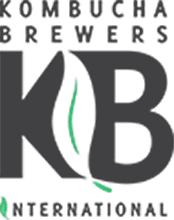Novel Kombucha Beverage from Lingzhi or Reishi Medicinal Mushroom, Ganoderma lucidum, with Antibacterial and Antioxidant Effects.
Authors:
Aleksandra Sknepnek, Milena Panti, Danka Matijaevi, Dunja Mileti, Steva Levi, Viktor Nedovi, Miomir Niksic
Abstract:
Kombucha is a nonalcoholic beverage traditionally made by fermenting black tea using a combination of yeast and acetic acid bacteria (AAB) cultures. Ganoderma lucidum hot water extract (HWE) was used-to our knowledge for the first time to prepare a novel, health-promoting kombucha product. During the 11-day fermentation, pH, total acidity, and the numbers of yeasts and AAB were monitored. It was found that sweetened G. lucidum HWE was a good medium for yeast and AAB growth. The desired acidity for the beverage was reached on the second day (3 g/L) of the fermentation process; the maximum established acidity was 22.8 ± 0.42 g/L. Fourier transform infrared analysis revealed that the vacuum-dried beverage is a mixture of various compounds such as polysaccharides, phenols, proteins, and lipids. The total phenolic content of the liquid sample was 4.91 ± 0.2338 mg gallic acid equivalents/g, whereas the vacuum-dried sample had a smaller amount of phenolics (2.107 ± 0.228 gallic acid equivalents/g). Established half-maximal effective concentrations for DPPH scavenging activity and reducing power were 22.8 ± 0.17 and 10.61 ± 0.34 mg/mL, respectively. The antibacterial testing revealed that activity does not originate solely from synthesized acetic acid. The liquid G. lucidum beverage was the most effective against the tested bacteria, with the lowest minimum inhibitory concentration (0.04 mg/mL) against Staphylococcus epidermidis and Rhodococcus equi, and a minimum bactericidal concentration (0.16 mg/mL) against Bacillus spizizenii, B. cereus, and R. equi. The vacuum-dried sample was less effective, with the lowest minimum bactericidal concentration against the Gram-positive bacteria R. equi (1.875 mg/mL) and against the Gram-negative bacteria Proteus hauseri (30 mg/mL).
Keywords: acetic acid, acidity, antioxidant, black tea, ph, protein, time
Country: Serbia
Citation: International Journal of Medicinal Mushrooms [01 Jan 2018, 20(3):243-258]
Study Mailing Address:
Institute for Food Technology and Biochemistry, Faculty of Agriculture, University of Belgrade, Belgrade, Serbia.
Date Updated: March 26, 2020
 0 people like this study.
0 people like this study.